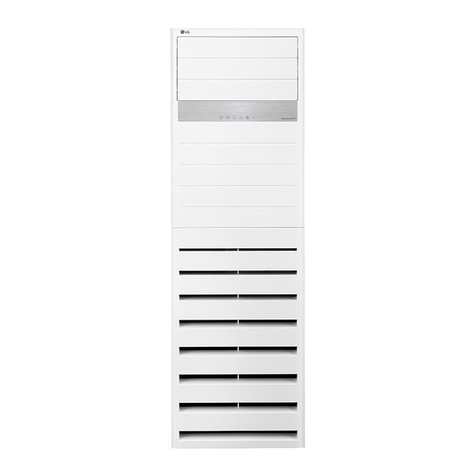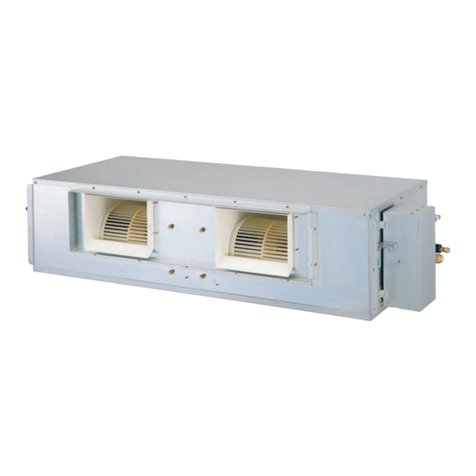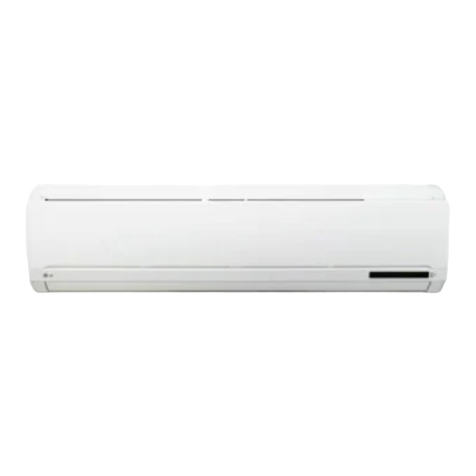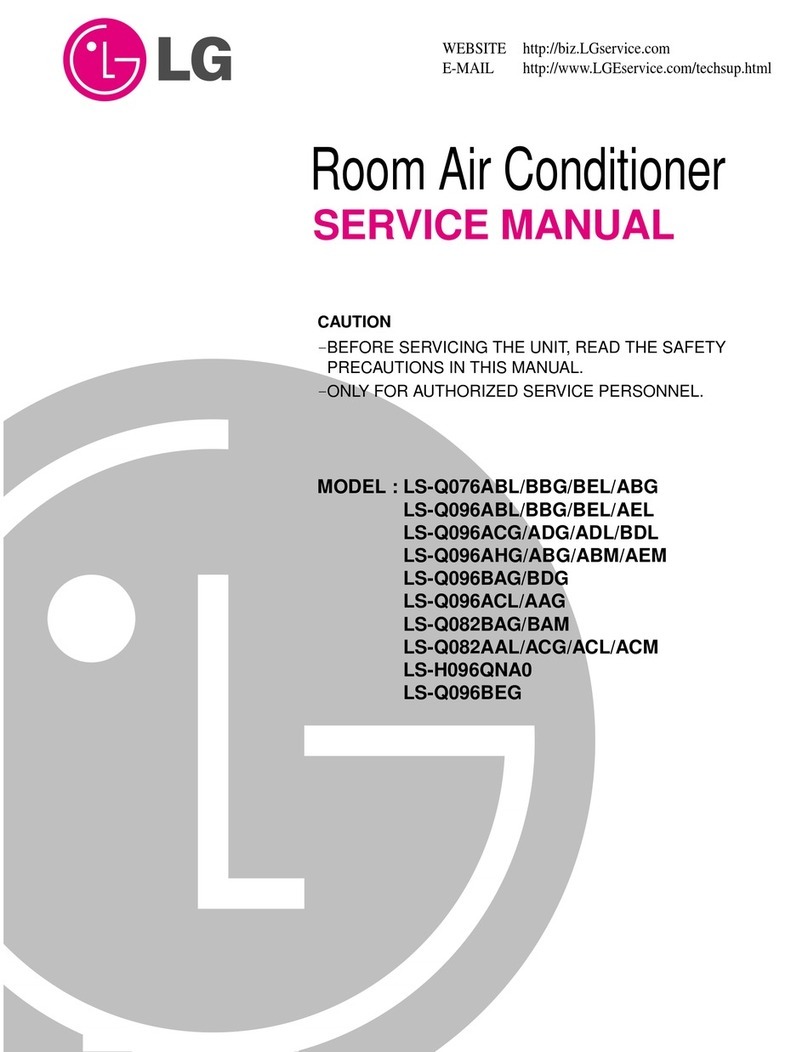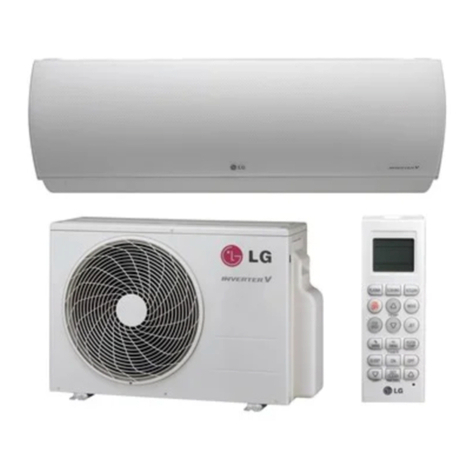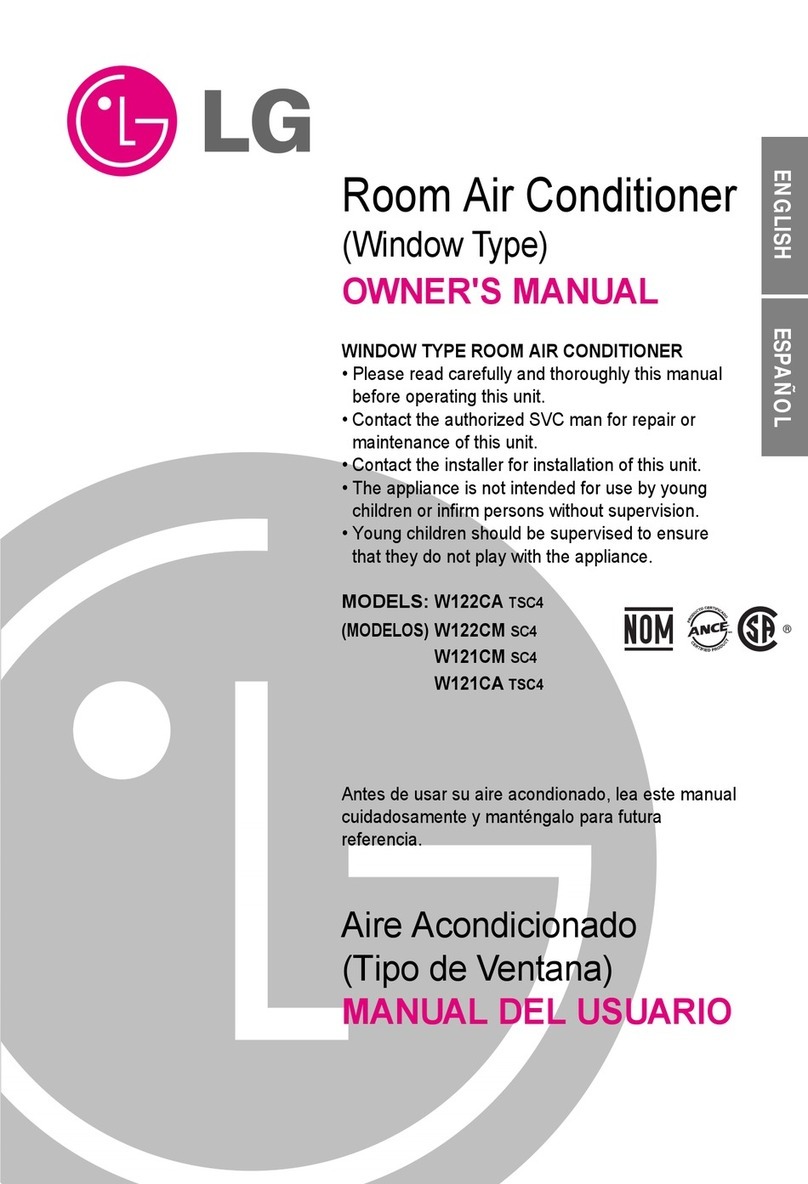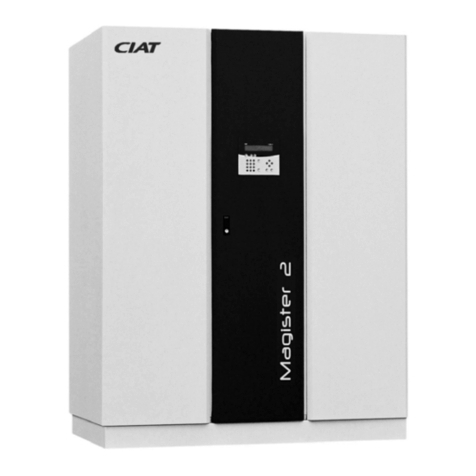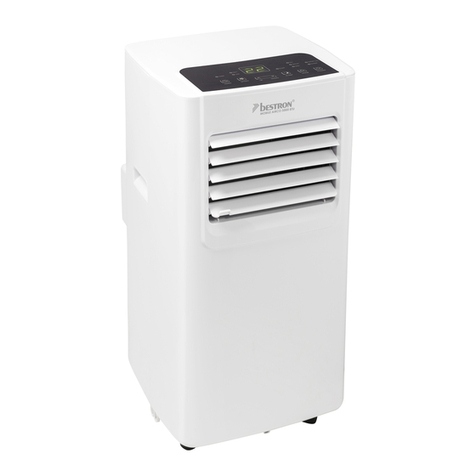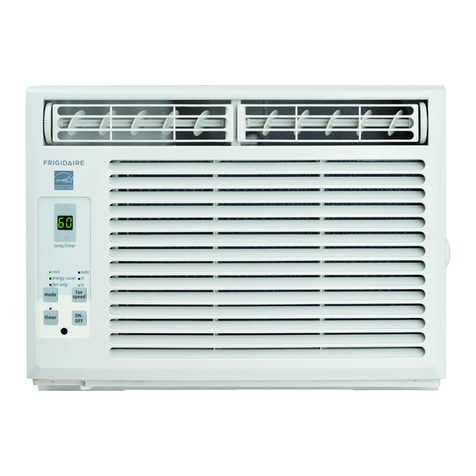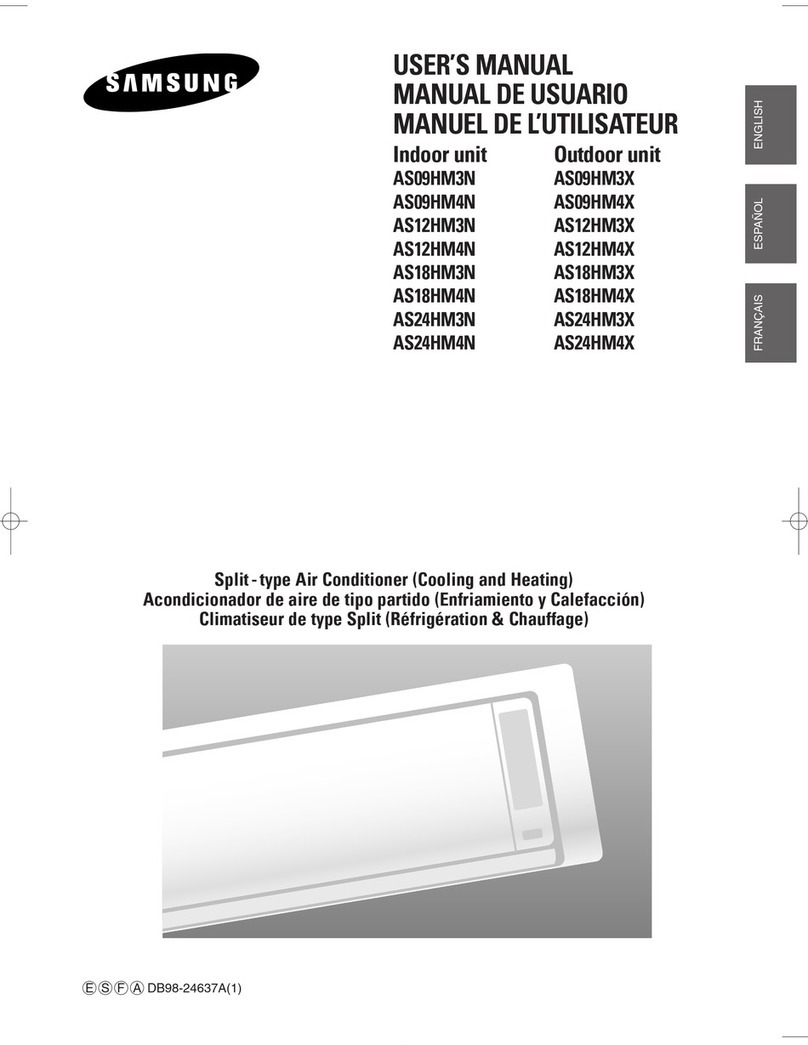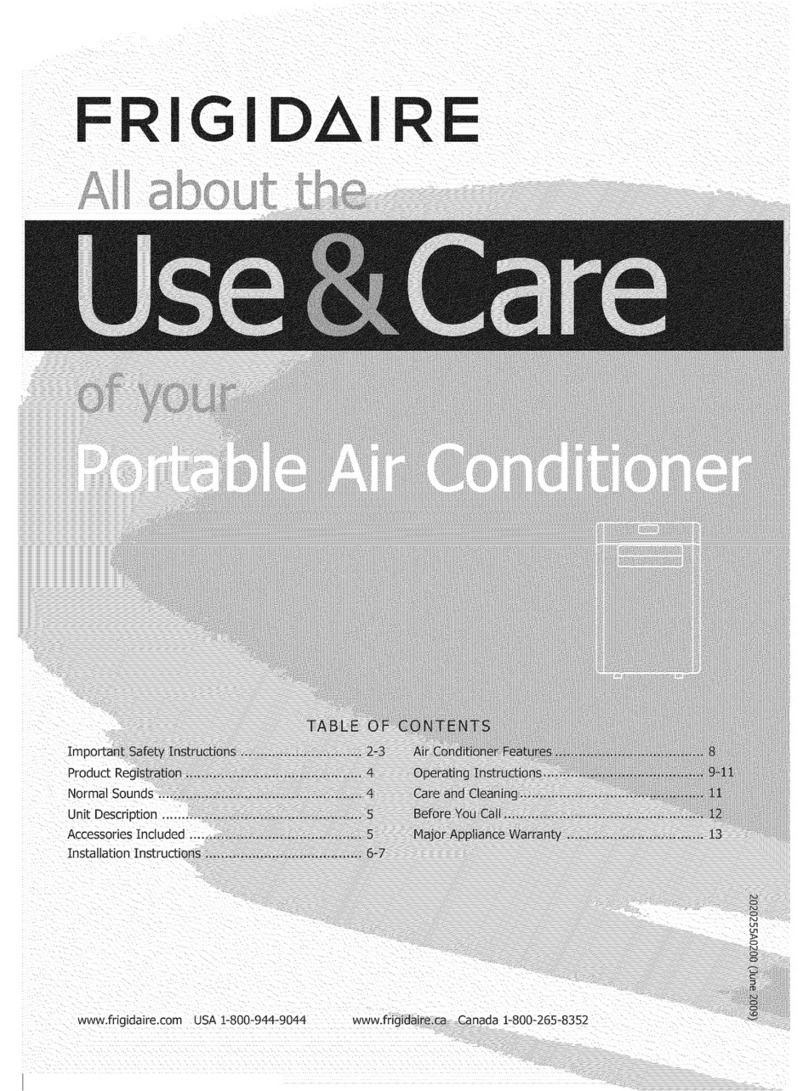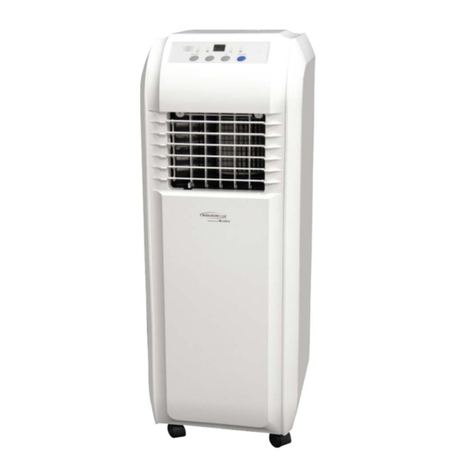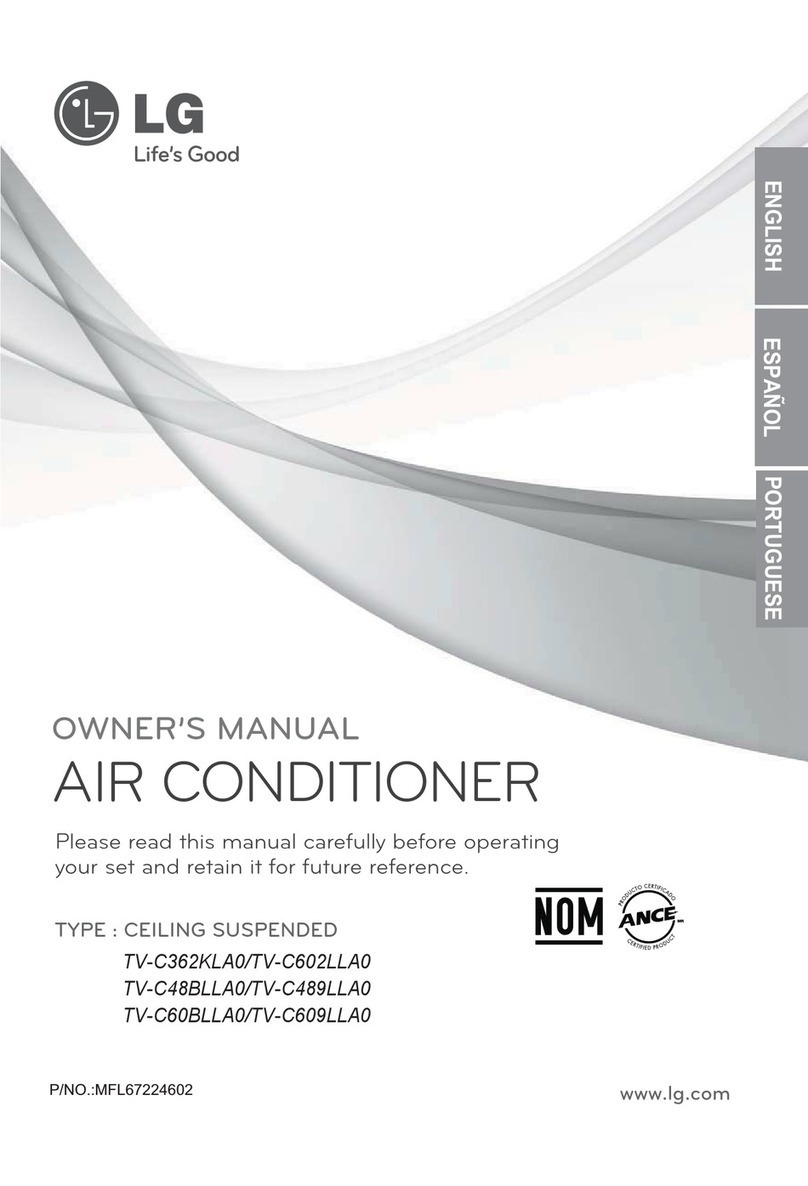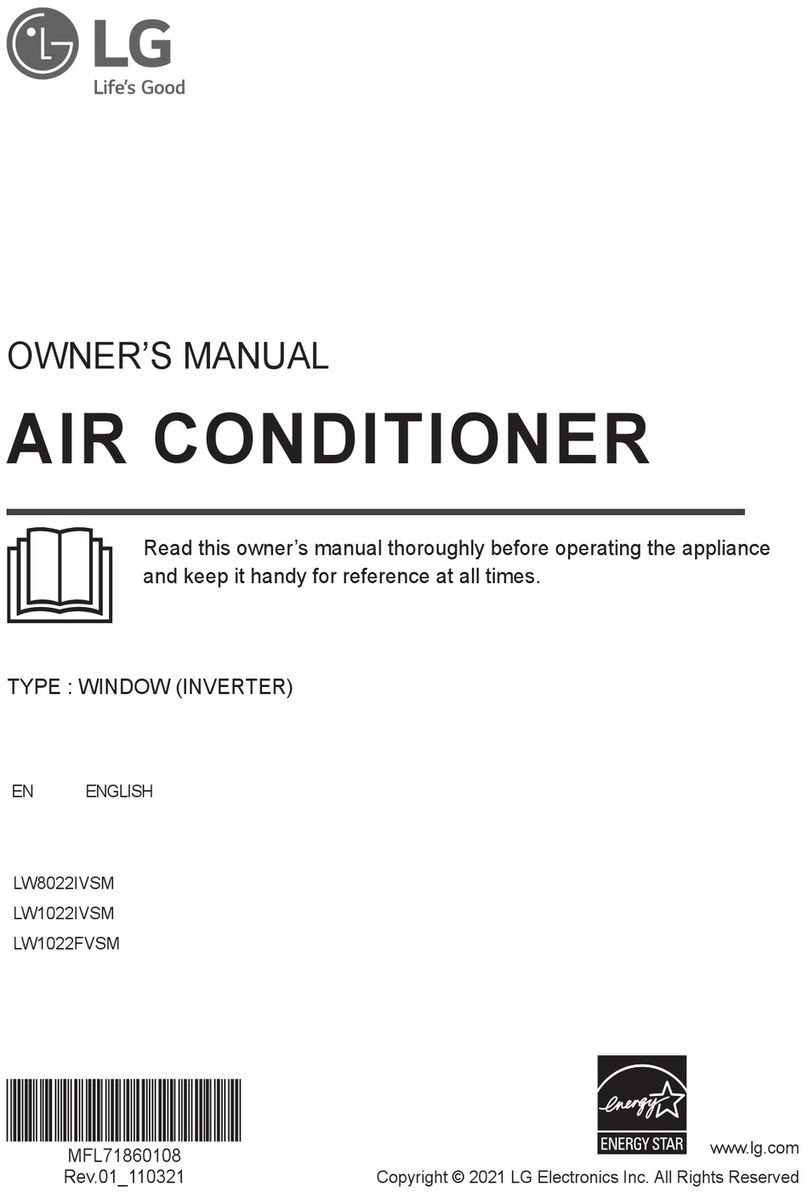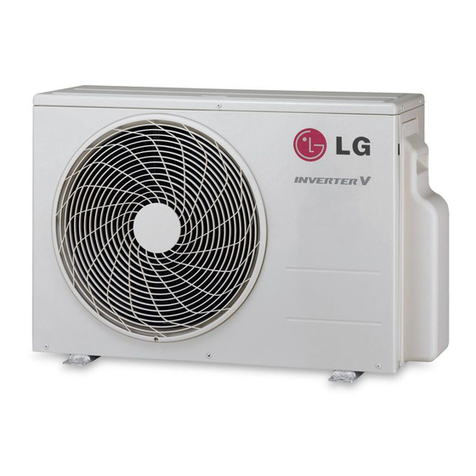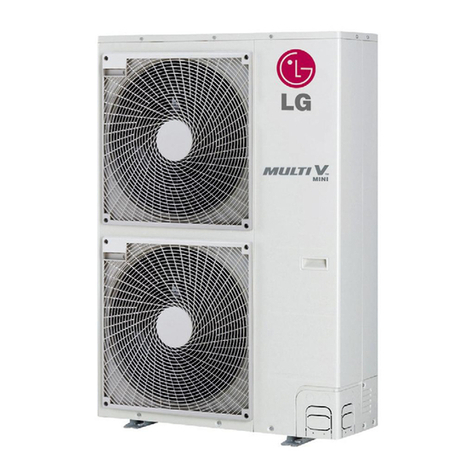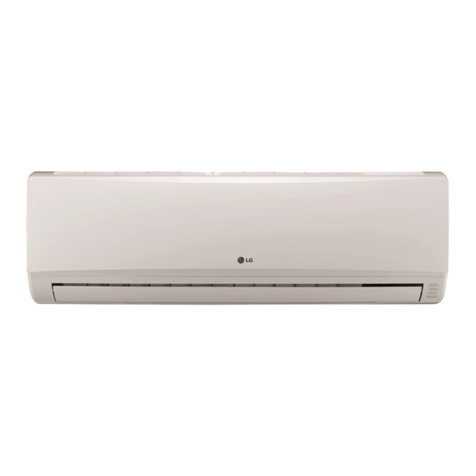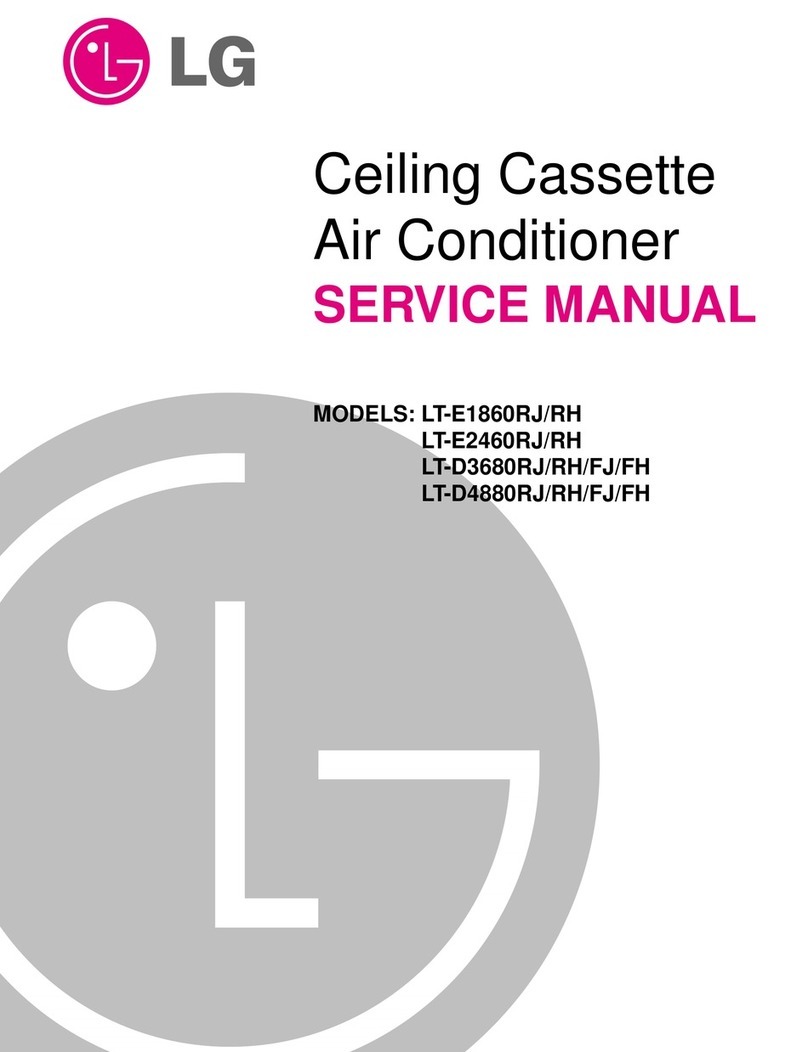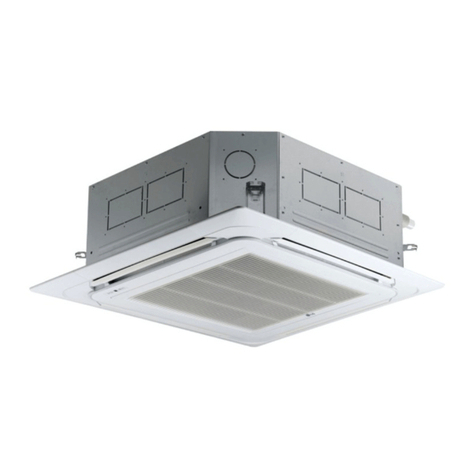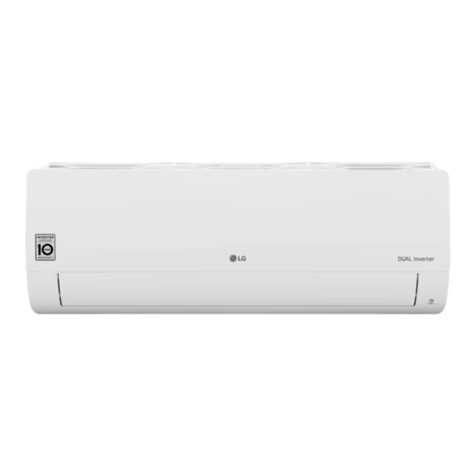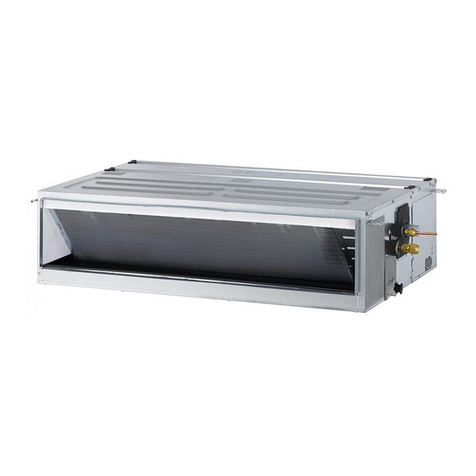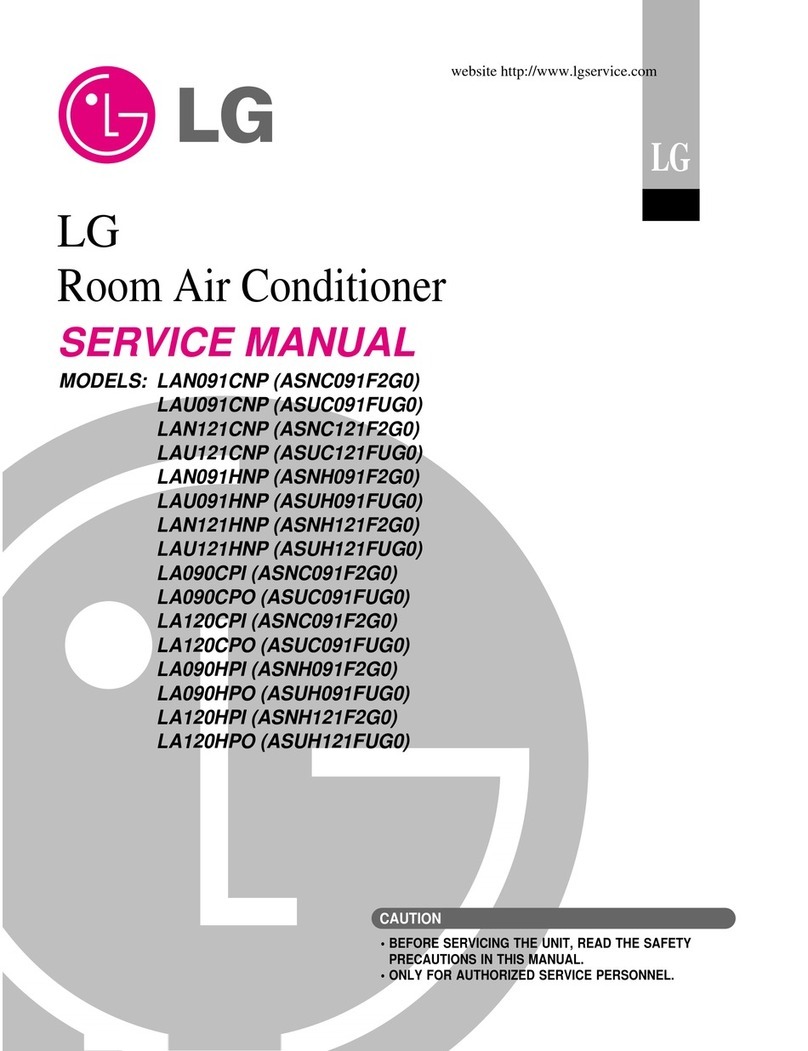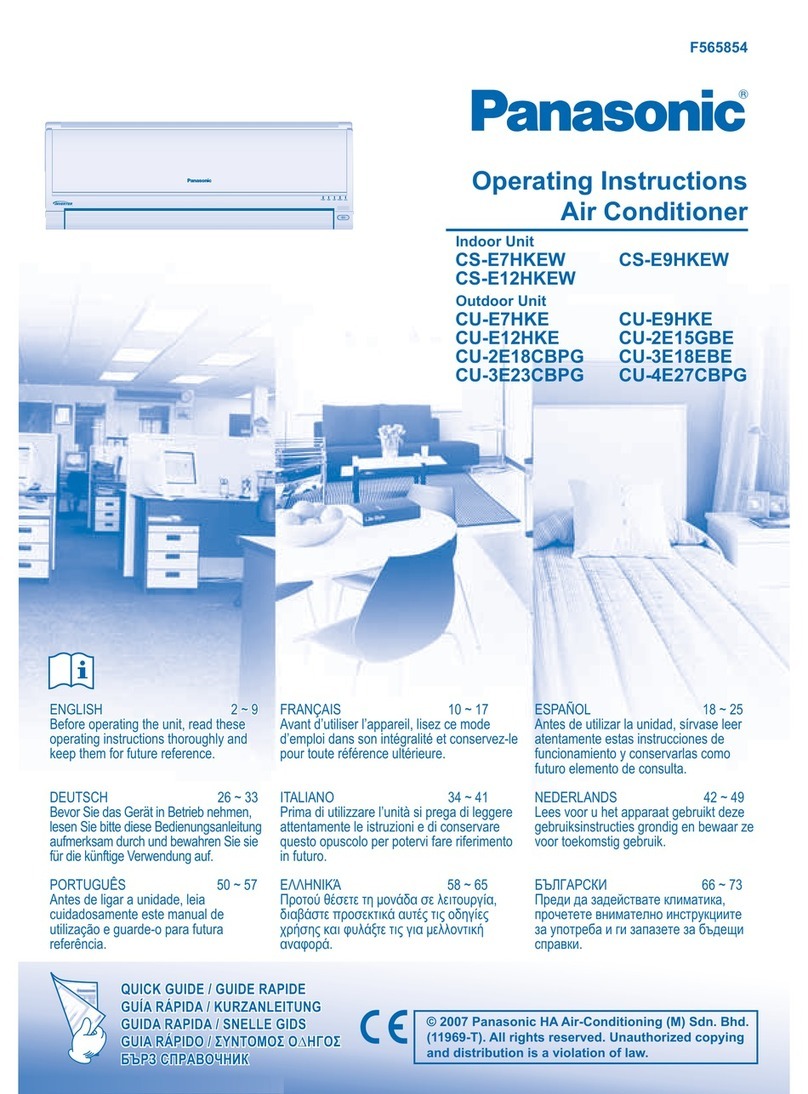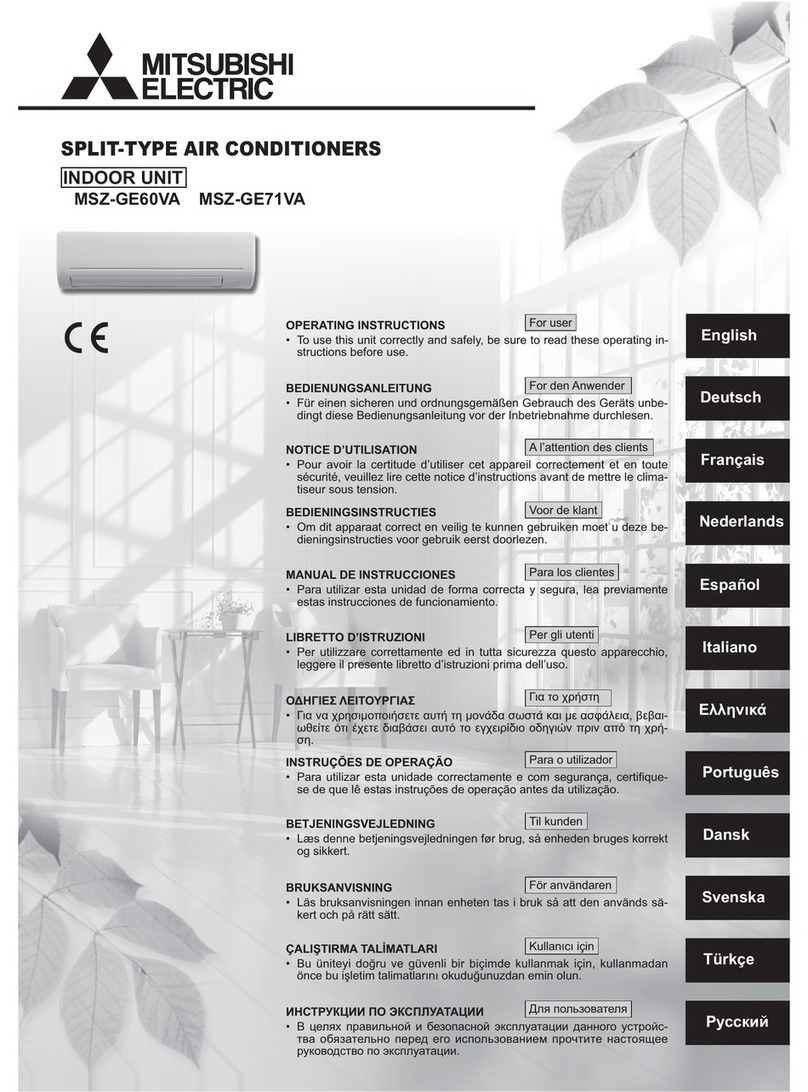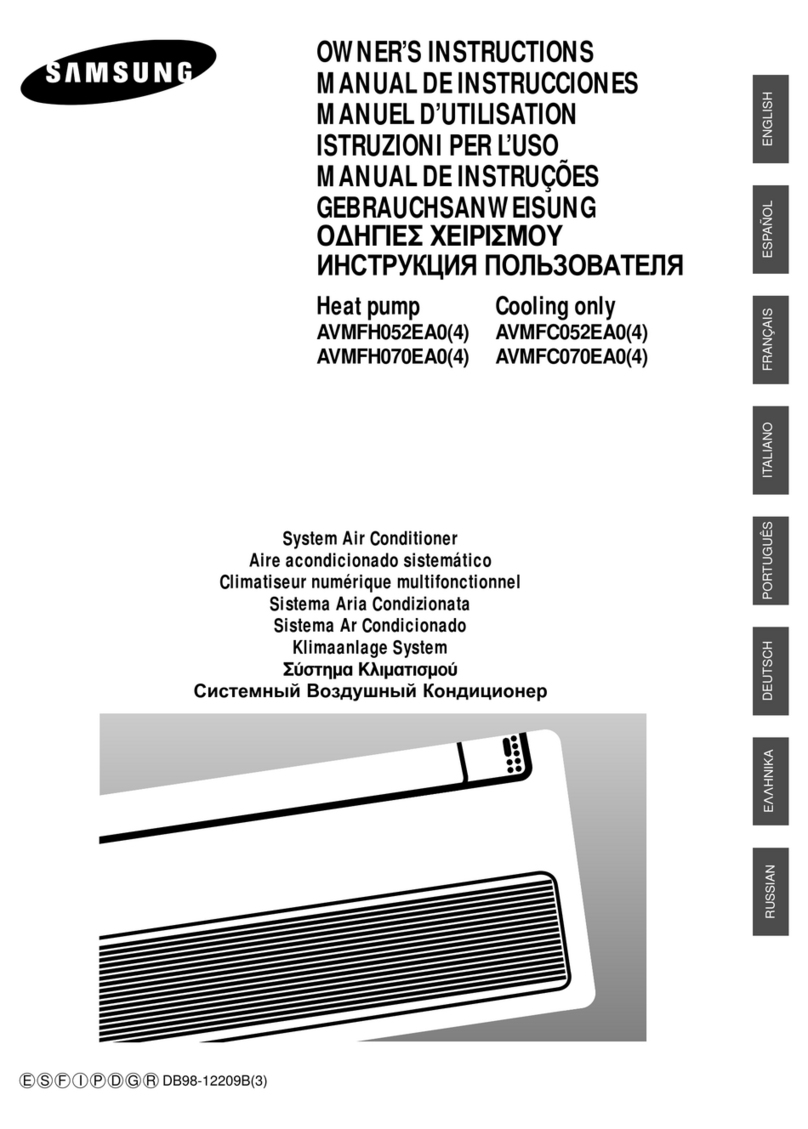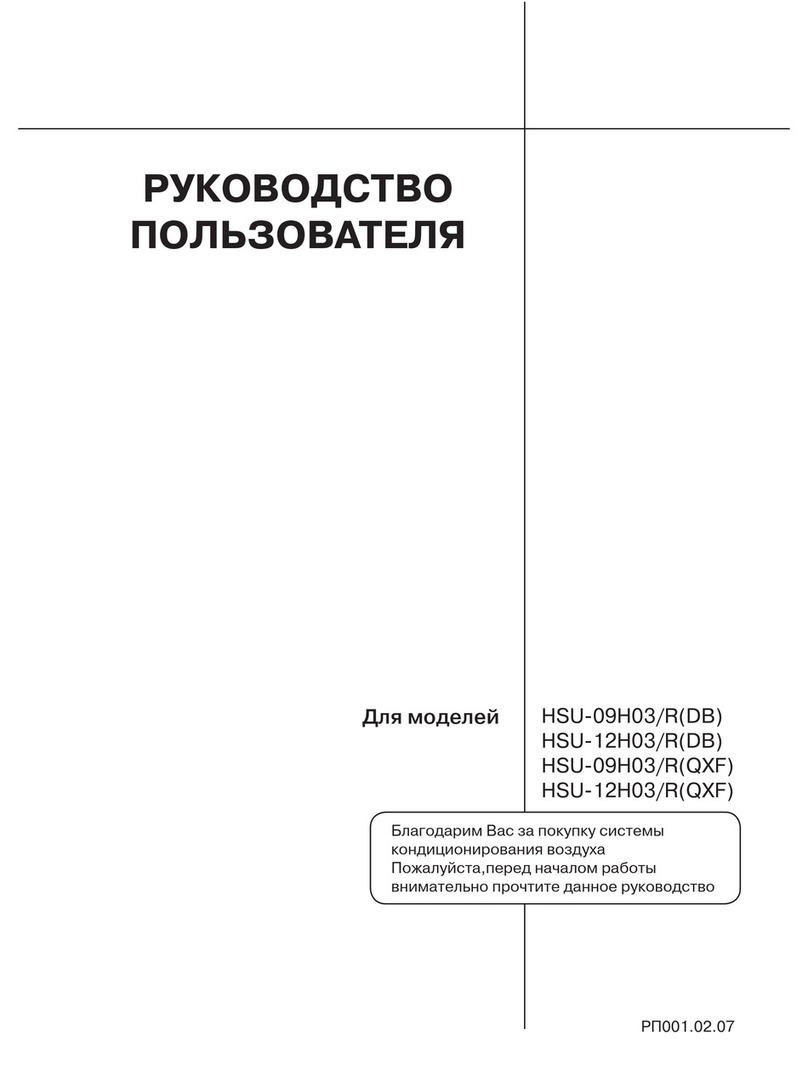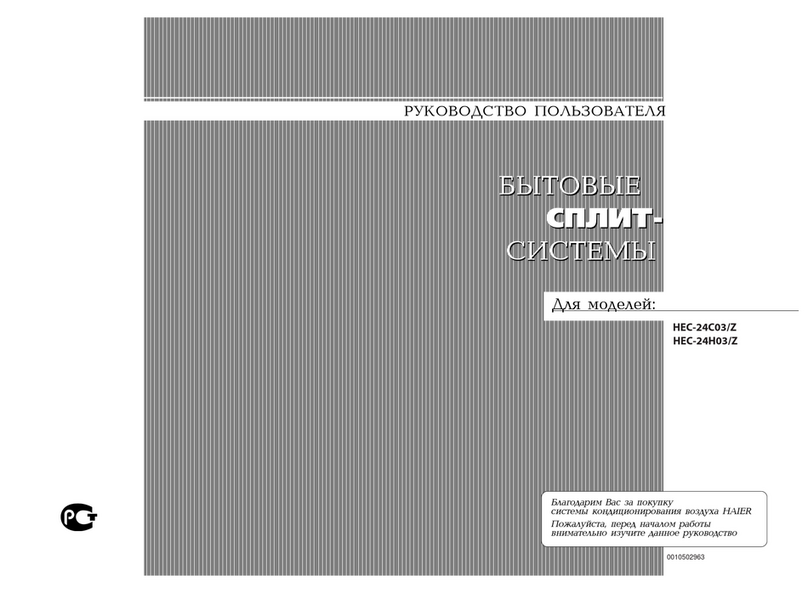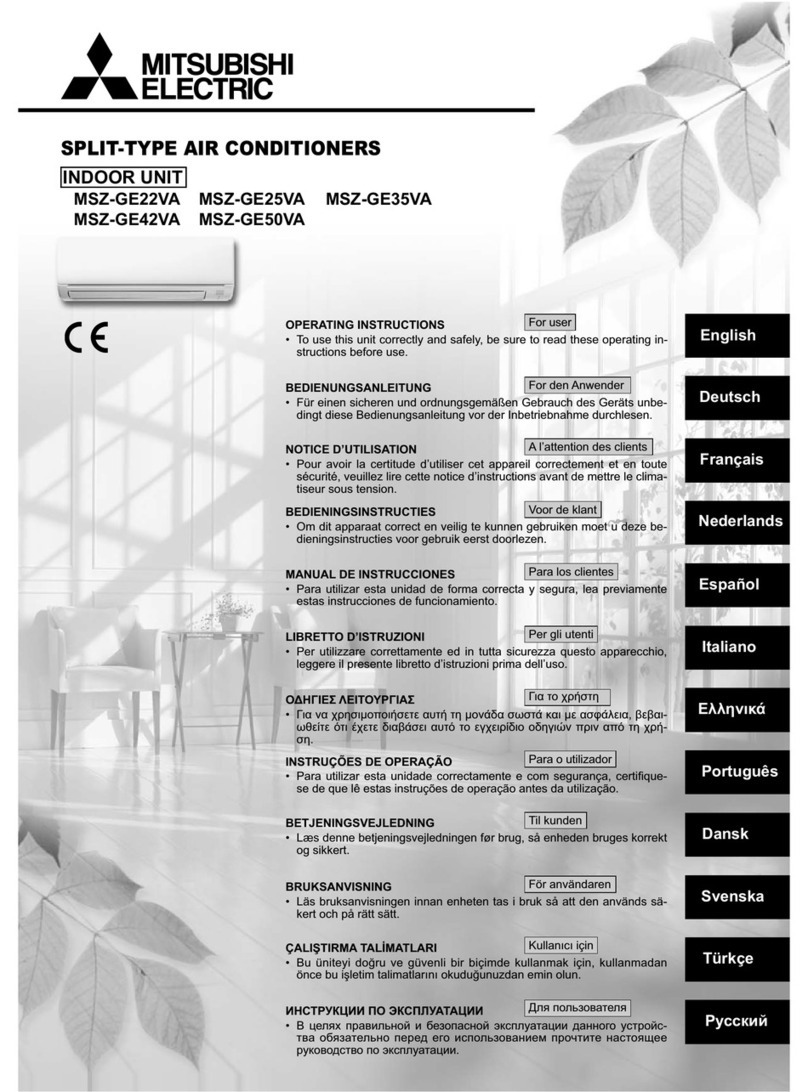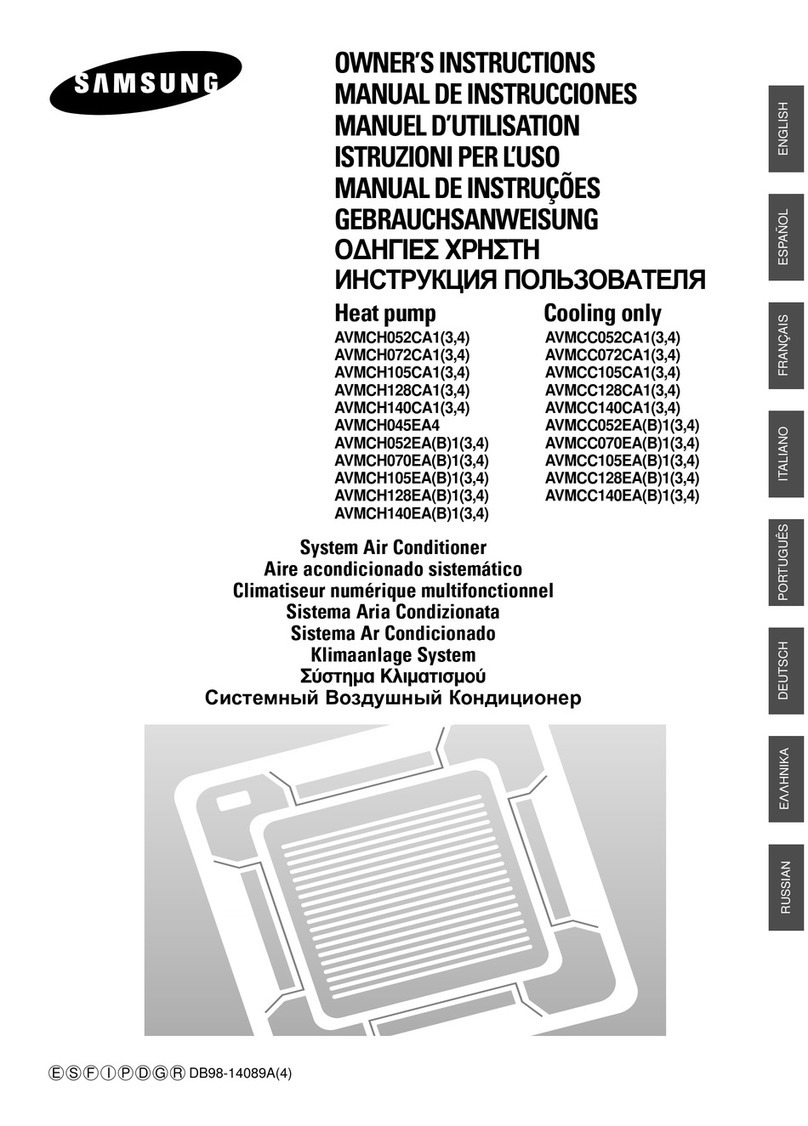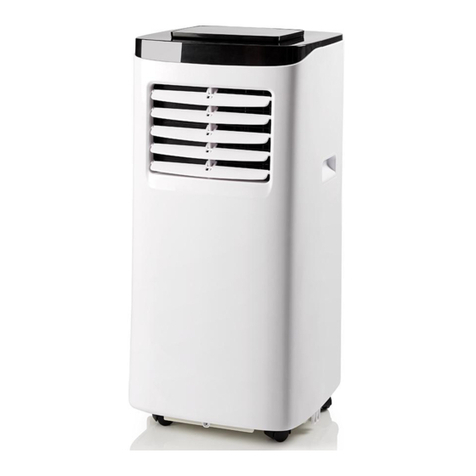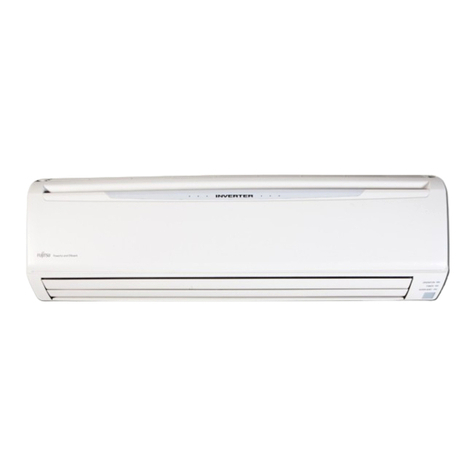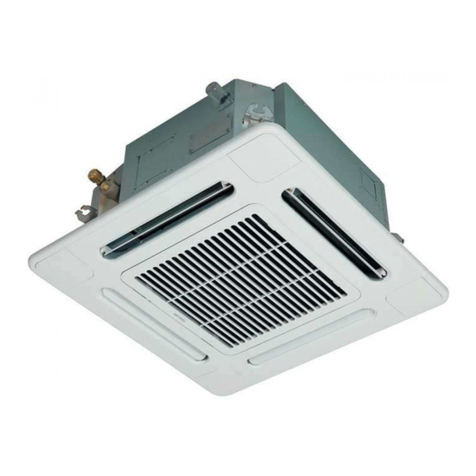CAUTION
CAUTION
WARNING
WARNING
4
Never touch the metal parts
of the unit when removing
the filter.
Do not clean the air
conditioner with water. Ventilate well when using in
proximity to a stove, etc.
• They are sharp and may cause
injury. • Water may enter the unit and
degrade the insulation. It may
cause an electric shock.
• Failure to provide adequate
ventilation may reduce available
oxygen.
When cleaning the unit, first
make sure the power and
breaker are turned off.
Do not put a pet or house
plant where it will be
exposed to direct air flow.
This product is not designed for
critically controlled atmosphere
applications. Do not use this
product for such applications.
• Since the fan rotates at high
speed during operation, it can
cause injury.
• This could injure the pet or plant. • Doing so may cause loss of
property.
Stop operation in storm or
hurricanes. Hold the plug by the head
when removing if from the
socket.
Turn off the main power
switch when not using
product for extended period.
• Operation with windows opened
may cause wetting of indoor and
soaking of household furniture.
• Failure to do so can cause
electric shock and damage. • It may cause failure of product or
fire.
Do not place obstacles
around the inlet or output.
Ensure that an installation window of
the outdoor product is not damaged
due to the use over long periods.
Always insert the filter
securely. Clean it every two
weeks.
• It may cause failure of appliance
or accident. • Failure to do so may increase the
risk of the product failing. • Operation without filters will lead
to failure.
When cleaning use a soft
cloth. Never use abrasive or
strong chemical agents.
Do not place heavy object
on the power cord.
Do not drink water drained
from air conditioner.
• Appearance may deteriorate due
to change of product color or
scratching of its surface.
• It contains contaminants and can
make you sick.
In area where flamable gases may be used,
always ventilate the area before using the Air
Conditioner.
Do not disassemble or modify products
randomly.
• Doing so poses the risk of failure or electrical shock.
If water enters the product, turn off the the
power switch of the main body of appliance.
Contact service center after removing the
power-plug out from the socket.
Do not point airflow at room occupants.
• Doing so could increase the risk of certain health
problems.
